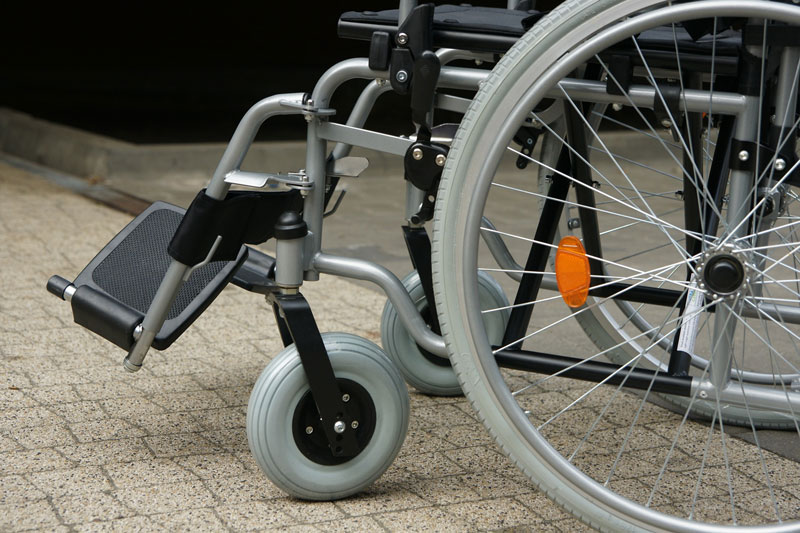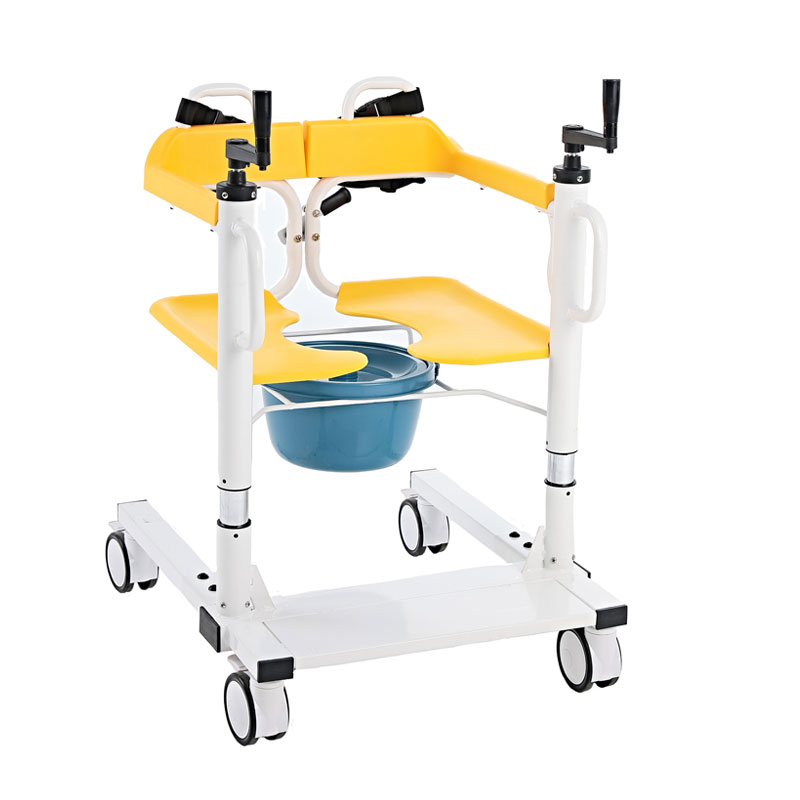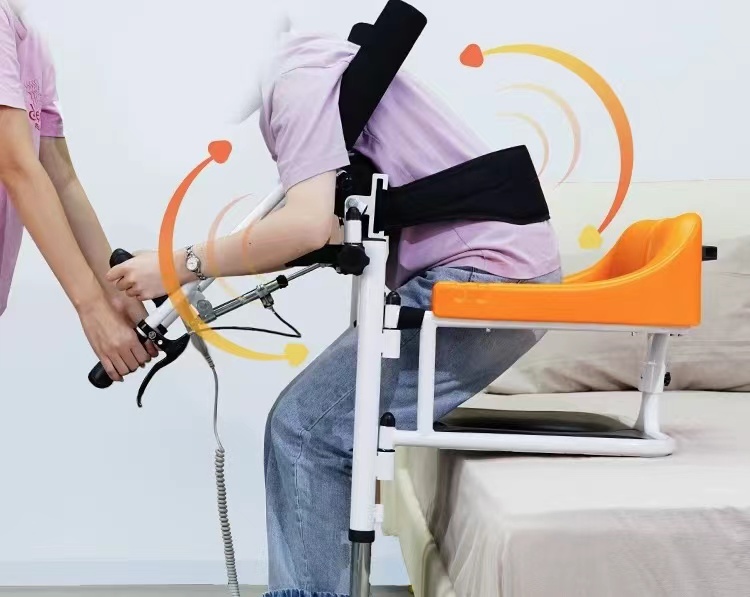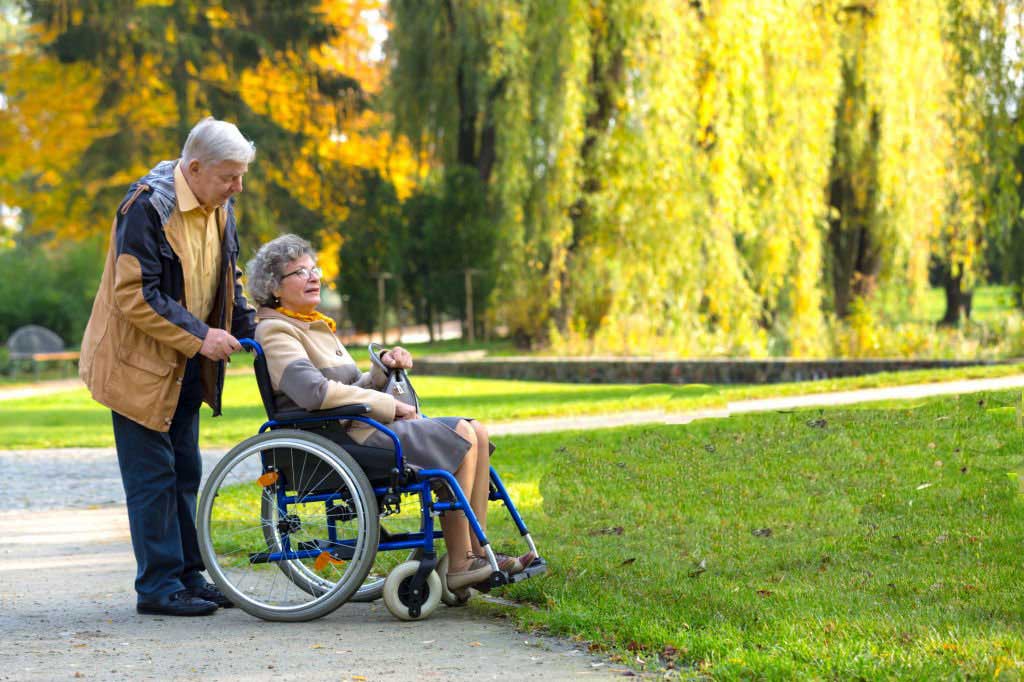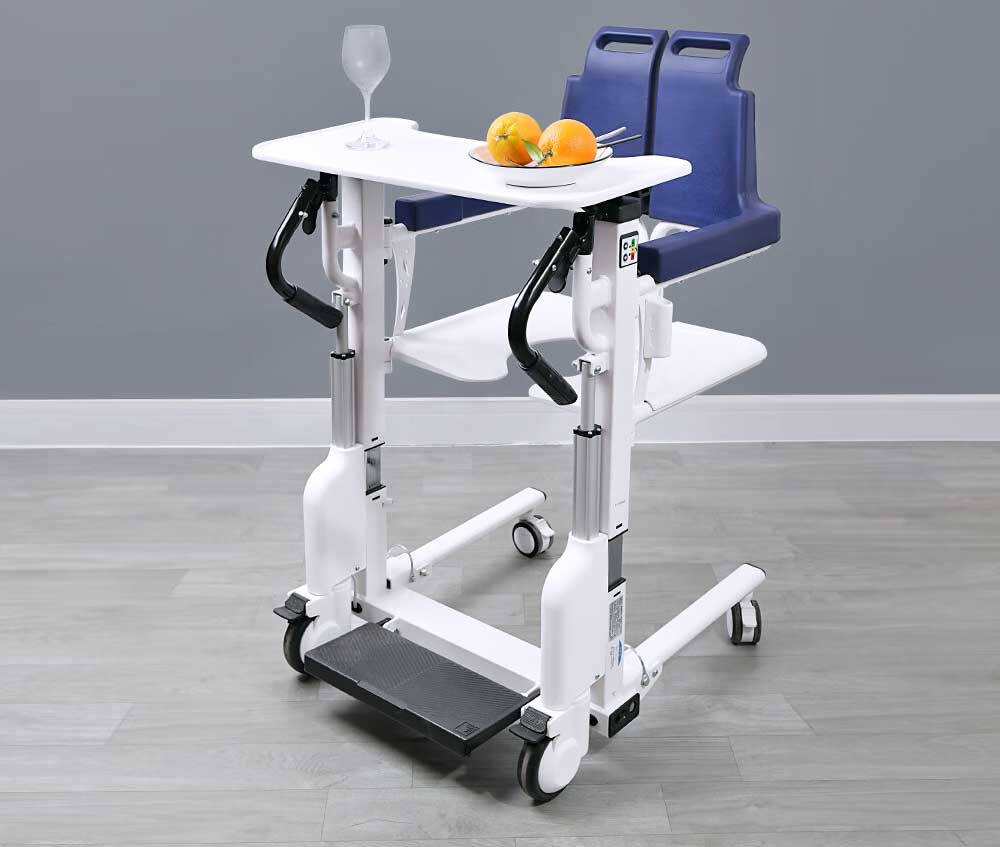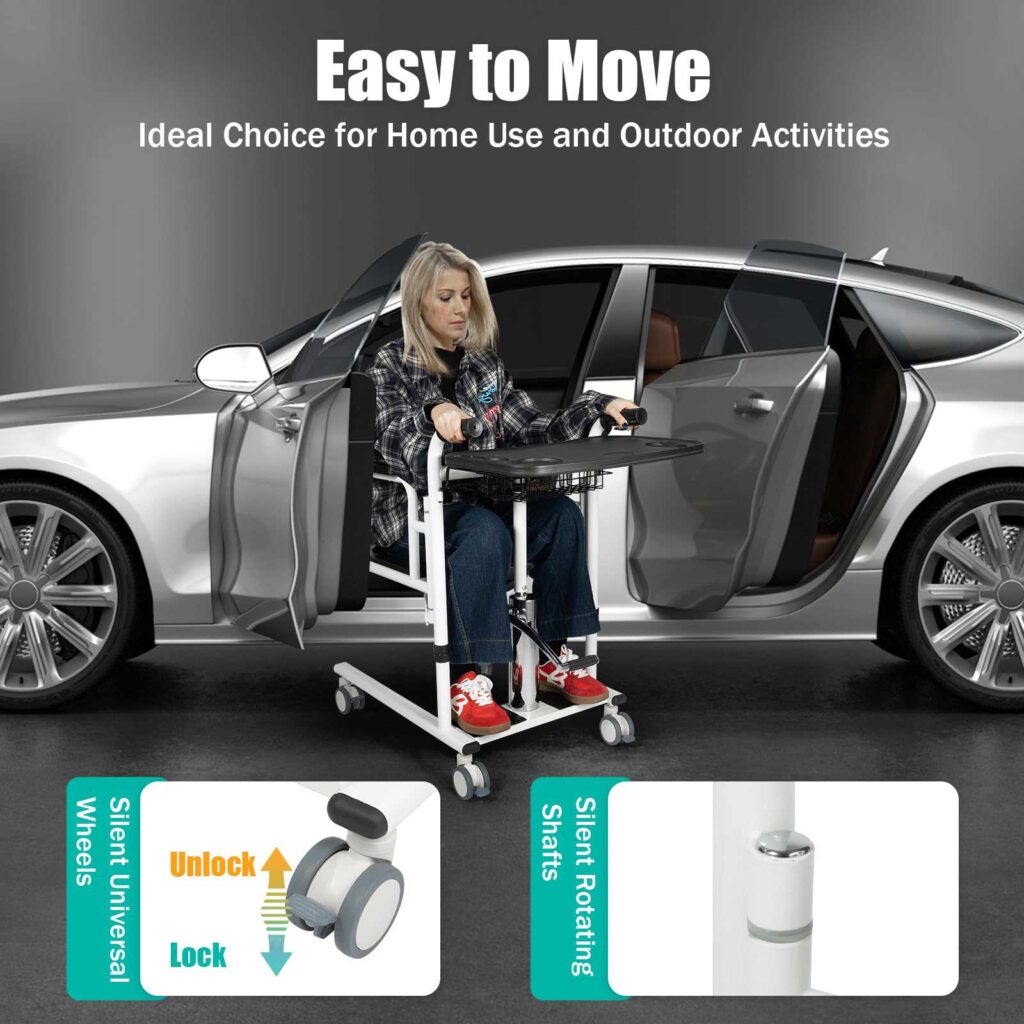Transfer chair is often referred to as a “transfer wheel chair” or “lift transfer chair” or “transfer seat”and it’s typically used for hosptial, health care organization and home nursing. Transfer chair prioritizes storability and portability, it incorporates four smaller wheels and eliminates the larger, rear-mounted wheels typically found on standard wheelchairs, so it’s a simplified version of the wheelchair.

Types of transfer chair and features
1. Manual transfer chair
Manual transfer chair is a mobility aid designed to help individuals with limited mobility safely and comfortably move between different locations, such as from a bed to a wheelchair, a car seat, or a toilet.
Most transfer chairs are equipped with footrests that can help the elderly support their upper bodies, allowing caregivers to assist with the transfer. At the same time, it can enhance the stability and safety of the elderly when sitting.
When the elderly or patients have difficulty moving, the transfer chair split seat can be opened and horizontally inserted into the buttocks of the elderly to reduce the difficulty of riding caused by their insufficient physical strength.
Most transfer chairs are suitable for the elderly, the disabled or seriously ill patients.
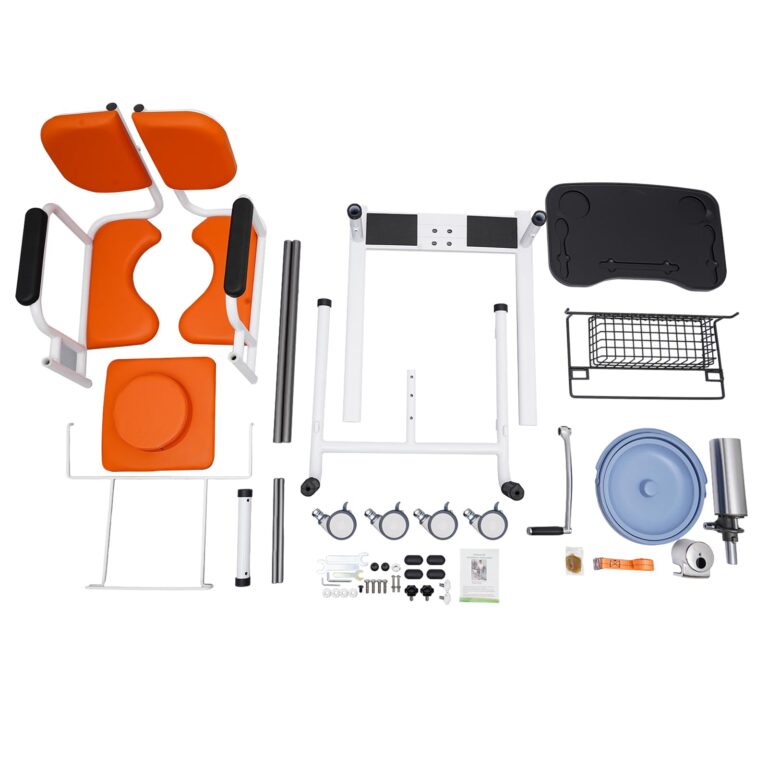
Simple, reliable and stable lifting
It uses a screw lifting mechanism to adjust the height of the transfer chair, thereby helping patients move their location to another place. Usually, the manual transfer chair is equipped with two joysticks, which can be rotated to adjust the height on both sides simultaneously. Its smooth ascent enables the patient to better accept lifting and lowering.
The transfer chair adopts a simple mechanical structure, is easy to maintain and not prone to damage. However, please note that most transfer chair is not waterproof and is not recommended for long-term use in a humid environment.
Problems of laborious operation and low efficiency
Unlike powered (electric) transfer chairs, manual models rely on physical assistance from a caregiver or the user’s own strength for movement, Therefore, for some obese or overweight patients, manual transfer chairs have the problems of laborious operation and low efficiency.
2. Hydraulic transfer chair
A hydraulic transfer chair (also called a hydraulic patient lift chair or hydraulic transfer aid) is a mobility device designed to safely move individuals with severe mobility limitations (e.g., paralysis, advanced muscle weakness, or post-surgical recovery) between surfaces (e.g., bed ⇄ wheelchair ⇄ toilet) using hydraulic power for smooth, effortless lifting and lowering.
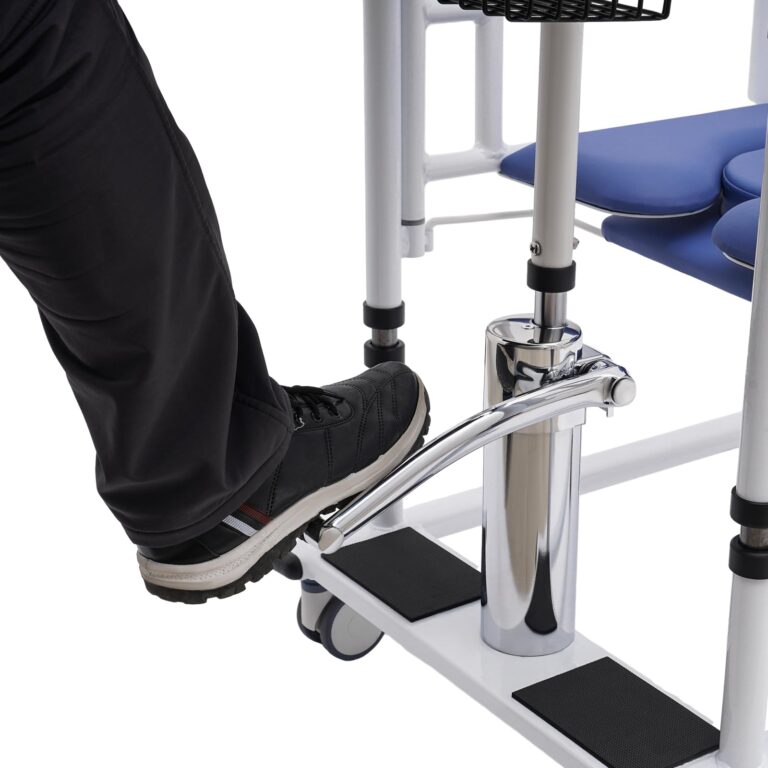
Popular Hydraulic Transfer Chair Types
1.Stand-Up Hydraulic Lifts
Helps users transition from sitting to standing (e.g., Hoyer Advance®).
2.Sling-Based Hydraulic Lifts
Uses a fabric sling to cradle the user (common in hospitals).
3.Mobile Hydraulic Transfer Chairs
Wheeled base for moving users between rooms.
Effortless and convenient transportation
hydraulic transfer chair uses Hydraulic Lifting Mechanism such as a pump-operated hydraulic system (manual or foot-pedal-powered) to raise/lower the user gently, reducing caregiver strain.
It’s good to Eliminate the need for physical lifting, minimizing injury risks.
But you need to know that Hydraulic transfer chairs require regular maintenance, such as hydraulic seals, hydraulic rods and hydraulic oil. Once any one of these components is damaged, it will cause the elderly to suddenly fall or roll over during the transfer process.
3. Electric transfer chair
An electric transfer chair (also called a electric patient lift transfer chair or electric patient transfer chair) is a mobility device designed to help individuals with limited strength or mobility move safely between surfaces (e.g., bed ⇄ wheelchair ⇄ car seat) using an electric motor for effortless, independent or assisted transfers.
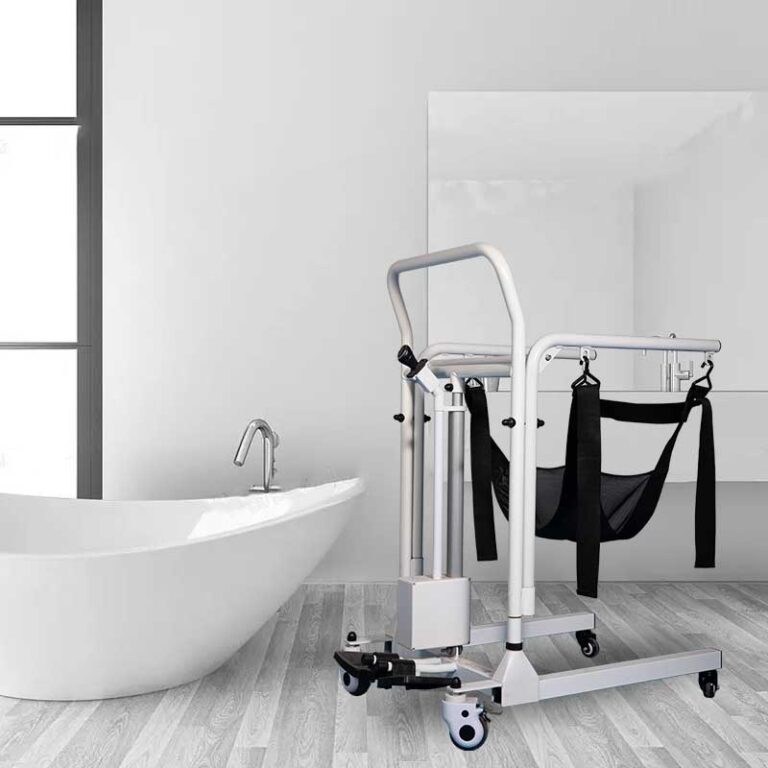
Electric transfer chair currently has three mainstream technical solutions
- electric transfer use motor and battery, most modern lifts use electric actuators for lifting and lowering. Simple design, low maintenance, and precise control. Common in hospitals and homes.
- hydraulic transfer chair use manual pedel and hydraulic systems, widely used in low-cost or power-limited environments.
- Electro-Hydraulic transfer chair use motor-driven hydraulic pump, combines electric and hydraulic advantages. Used for heavy-duty applications or smoother lifting requirements.
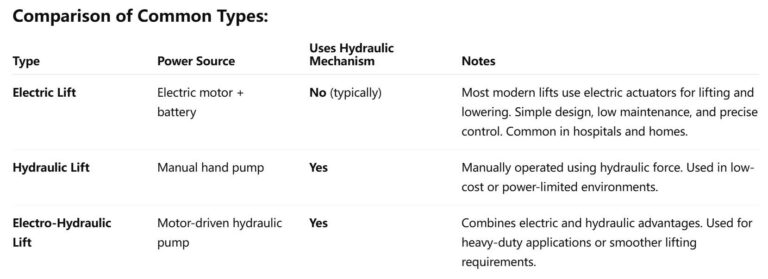
Popular Types of Electric Transfer Chairs
Stand-Assist Chairs
Gently lifts users to a standing position (e.g., Sit-to-Stand Power Chairs).
Overhead Ceiling Lifts
Motorized track systems (installed in homes/hospitals).
Portable Electric Transfer Aids
Compact units for travel (e.g., Portable Power Lifters).
What are the application scenarios of transfer chairs
1. Transfer chair for shower
Shower transfer chairs, also known as shower commode chairs or transfer chair for bath, are specialized mobility aids designed to help individuals with limited mobility safely and comfortably bathe.
These chairs are typically used in wet environments, such as showers or bathtubs, and facilitate easy transfer from a wheelchair or other mobility device.
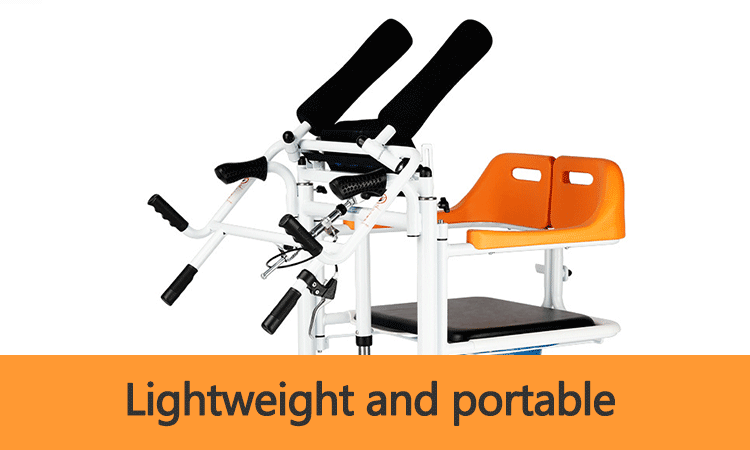
Standard Shower Transfer Chair
Shower transfer chairs are lightweight and waterproof chair with a backrest, armrests, and sometimes a commode opening. It helps users transfer from a wheelchair to the shower seat, allowing them to bathe while seated.
For using of shower, the non-slip rubber tips on legs are important, It can help the elderly avoid falling due to an unstable center of gravity when cleaning their bodies.
Slide-Transfer Shower Chair
Slide-Transfer Shower Chair also known as sliding shower transfer chair, features a sliding seat that allows the user to move sideways from their wheelchair onto the shower seat with minimal effort. It adopts a slide rail design to help the elderly slide into the bathtub without any body rotation or movement, ideal for users with very limited lower-body strength who cannot stand or pivot.
Slide-Transfer Shower Chair is equipped with Smooth gliding mechanism, Locking wheels or stabilizers and Removable seat for cleaning.
Pivot Transfer Shower Chair
Pivot Transfer Shower Chair are designed with a swivel seat that rotates, helping the user turn from their wheelchair into the shower area. It has 360-degree rotating seat, Handgrips for stability and water-resistant materials, best for individuals who can bear some weight on their legs but need assistance turning.
Bathtub Transfer Bench
Bathtub Transfer Bench is a long seat that extends over the edge of the bathtub, allowing the user to sit first outside the tub and then slide inward. It’s equipped with adjustable legs to fit different tub heights, suction cups or rubber feet for stability.
Bathtub Transfer Bench is useful for people who struggle with stepping over high bathtub walls.
Rolling Shower Commode Chair
Rolling Shower Commode Chair is a wheeled shower chair that can be pushed directly into the shower, often with commode functionality. Shower Commode Chair has large wheels for easy movement, removable commode potty and flip-up armrests for easier transfers.
Suitable for users who need both toileting and showering assistance.
2. Transfer chair for a car
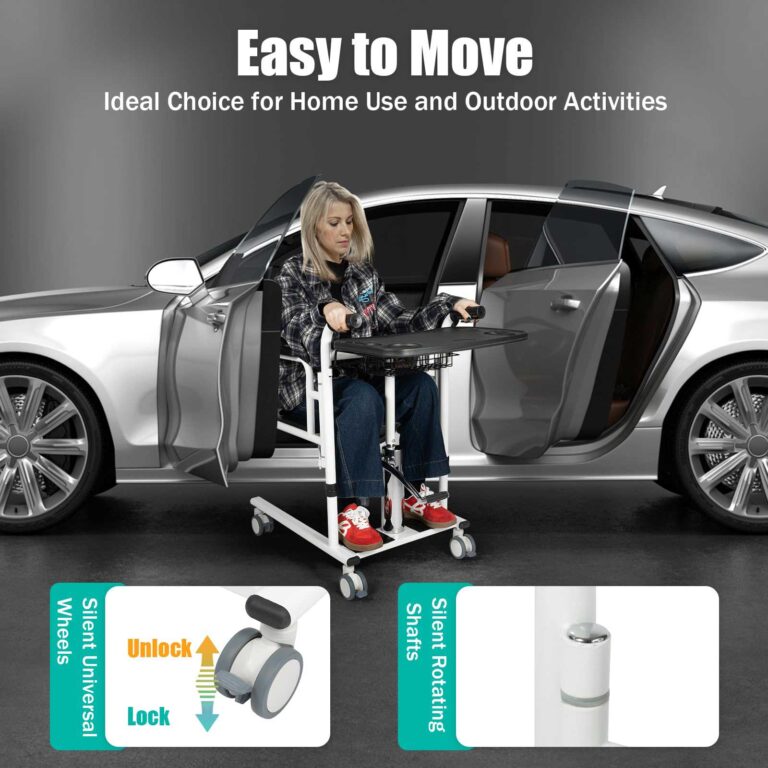
A transfer chair for car (also called a car transfer seat or vehicle mobility aid) is a portable assistive device designed to help individuals with limited mobility safely and comfortably get in and out of a car. It bridges the gap between a wheelchair and the car seat, reducing strain on both the user and caregiver.
Transfer chair for a car might be the most common scenario for the elderly when taking a ride, for example, it helps a wheelchair user transfer into the front passenger or back seat of a sedan or a SUV.
Key Features of a car transfer seat
Compact & portable design is essential for a car transfer seat. during the transfer process. Aluminum car transfer seats are lightweight and foldable, it’s easy to store in the trunk.
Swivel Seat & Adjustable Height make it more convenient for the elderly to get into the car. The car transfer seat usually can rotate 90°–360° to help users pivot into the car, some models can adjust height to match the vehicle seat level.
Non-Slip & Stable Base can keep the transferring safe, it has rubberized feet or grips to prevent sliding during transfers.
Also, the locking brakes, seat belts, or handles can provide additional safety and security.
3. Toilet transfer chair
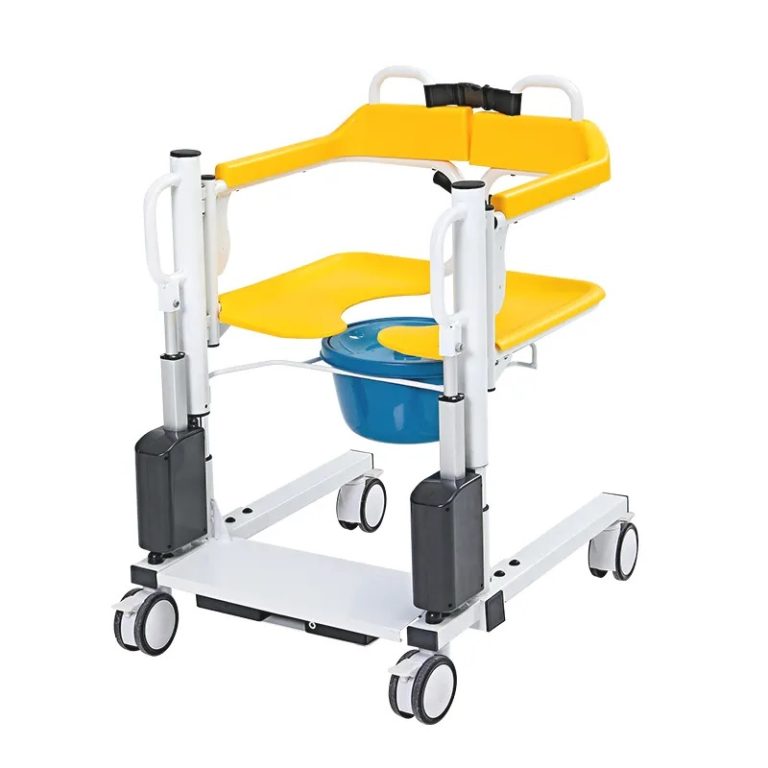
A toilet transfer chair (also called a commode transfer chair or toilet safety frame) is a mobility aid designed to help individuals with limited strength, balance, or mobility safely and independently transfer onto and off a toilet. It provides stability, support, and often adjustable features to accommodate different users and bathroom layouts.
Armrests & Handles has Padded or sturdy grips for support while sitting and standing. Some models have flip-up armrests for easier side transfers, which can bring greater stability and grip comfort.
Adjustable Height & Width are the basic for the adjustment. Toilet transfer chair legs can be lengthened or shortened to match toilet seat height which fits standard or raised toilets.
Rubberized Non-Slip Feet can prevent sliding on tile or wet floors.
Versatile Designs are more, such as Stand-alone frames and 3-in-1 Commode Chairs (toilet frame + removable bucket for bedside use).
4. Transfer patient from bed to chair
A transfer patient chair from bed to chair (also called a bedside transfer chair or patient lift chair) is a specialized mobility aid designed to safely assist individuals with limited strength or mobility in moving between a bed and a chair (e.g., wheelchair, recliner, or commode). It minimizes caregiver strain and reduces fall risks during transfers.
Stable, Lightweight Frame are made of aluminum or steel, it offers Often foldable for storage or travel.
Height-adjustable arms and seats are the most important adjustable components of a transfer patient chair, these chairs help to align with bed or chair heights. With the removable armrests or footrests, lateral transfers are easier.
A transfer patient chair is designed with safety enhancements, locking wheels or brakes to prevent rolling mid-transfer. Also, the non-slip grips and Weight capacity can protect the safety during the prolonged use.
Medical transfer chair

A medical transfer chair is a specialized mobility aid designed to safely assist patients with limited strength, balance, or mobility in moving between surfaces (e.g., bed to wheelchair, chair to toilet, or car seat) in clinical, home-care, or rehabilitation settings.
A medical transfer chair also called a patient lift transfer chair or patient lift and transfer chair.
Some hospitals and medical institutions in Europe and America also use bariatric patient transfer chairs to transfer special groups of people, in order to improve the efficiency of medical operation and patient experience, and to enable the elderly to gain dignity and careness.
It prioritizes safety, ergonomics, and caregiver support to prevent falls and reduce physical strain during transfers.
Medical-Grade Construction: medical transfer chair uses durable materials such as aluminum (lightweight option) or steel (heavy-duty option) frames are utilized. Weight capacity typically ranges from 250 to 500 lbs, with bariatric models available.
Adjustability for Enhanced Clinical Precision: Height-adjustable seats and armrests are the basic for a medical transfer chair, it helps ensure proper alignment with beds, wheelchairs, or toilets.
Removable and swivel armrests facilitate lateral transfers, such as bed-to-chair transitions.
Safety Mechanisms: The implementation of locking wheels or brakes in a medical transfer chair ensures stability and prevents unintended movement during patient transfers.
Additionally, these chairs are equipped with non-slip grips on handles and feet to enhance safety on wet or slippery floor surfaces.
Furthermore, medical transfer chairs provide seat belts or pelvic supports for patients at high risk of falls or instability, which is particularly important for elderly individuals.
Transfer chair considerations for different age groups
Pediatric Patients (Children & Teens)

Growth-adjustable features of a Pediatric Patients transfer chair (both height and width) is essental for Children & Teens. Additionally, the lightweight transfer chair design allows caregivers and parents to maneuver it with ease. Furthermore, Pediatric Patients transfer chair provides psychological comfort through colorful and child-friendly designs.
Recommended Types: Pediatric transfer chairs with adjustable seat depth and soft-sided transfer boards designed for smaller body sizes.
When using the Pediatric transfer chairs, you should ensure proper posture support by maintaining an upright position and avoiding slouching.
Use harnesses for children with low trunk control to provide additional stability. Opt for lightweight frames, such as aluminum or plastic, instead of heavy alternatives.
Adults (18–65 Years)
For adults, standard transfer chairs and stand-assist chairs provide an effective balance between independence and support. Ensuring durability for adults daily use, particularly in scenarios such as post-injury recovery, maintaining compatibility with both work and home environments.
Recommended Types: standard transfer chairs or stand-assist chairs.
You should ensure that the standard transfer chair weight capacity meets requirements, with particular attention to bariatric needs. Prioritize portability as a key consideration if the standard transfer chairs are intended for use in car transfers.
Older Adults (65+ Years)
For the elderly, fall prevention features include non-slip feet and locking brakes are the most important.
Additionally, the armrests are designed with an easy-to-grip surface for individuals with weak hands, providing enhanced comfort for those suffering from arthritis or osteoporosis.
Recommended Types: Padded transfer chairs with flip-up arms and powered lift chairs for frail users.
Utilize gait belts for caregiver-assisted transfers with padded transfer chairs to enhance safety and efficiency. Additionally, low seats should be avoided as they present significant challenges for standing up from padded transfer chairs.
Geriatric Patients (80+ Years/Frail Elderly)
For Geriatric Patients, minimal physical exertion is required. Stability of a transfer chair is ensured for individuals with cognitive impairments, such as dementia. Additionally, the design prioritizes hygiene through easy-to-clean surfaces.
Recommended Types: Electric transfer chairs or a ceiling transfer chair for full dependency.
Ensure adequate and bright lighting during transfers. Additionally, provide close supervision to prevent Geriatric Patients with confusion-related falls.
General Cross-Age Considerations
Bariatric Users: Heavy-duty transfer chair with frames have a capacity of 500 lbs or more.
Neurological Conditions (e.g., ALS, MS): Motorized transfer chair equipped with head and trunk support systems.
Post-Surgery: A height-adjustable transfer chair with customizable seating options, specifically designed to prevent restricted movements associated with hip precautions.
Please note that matching the transfer chair to the user’s physical ability, environment, and caregiver support, not just their age, is crucial.
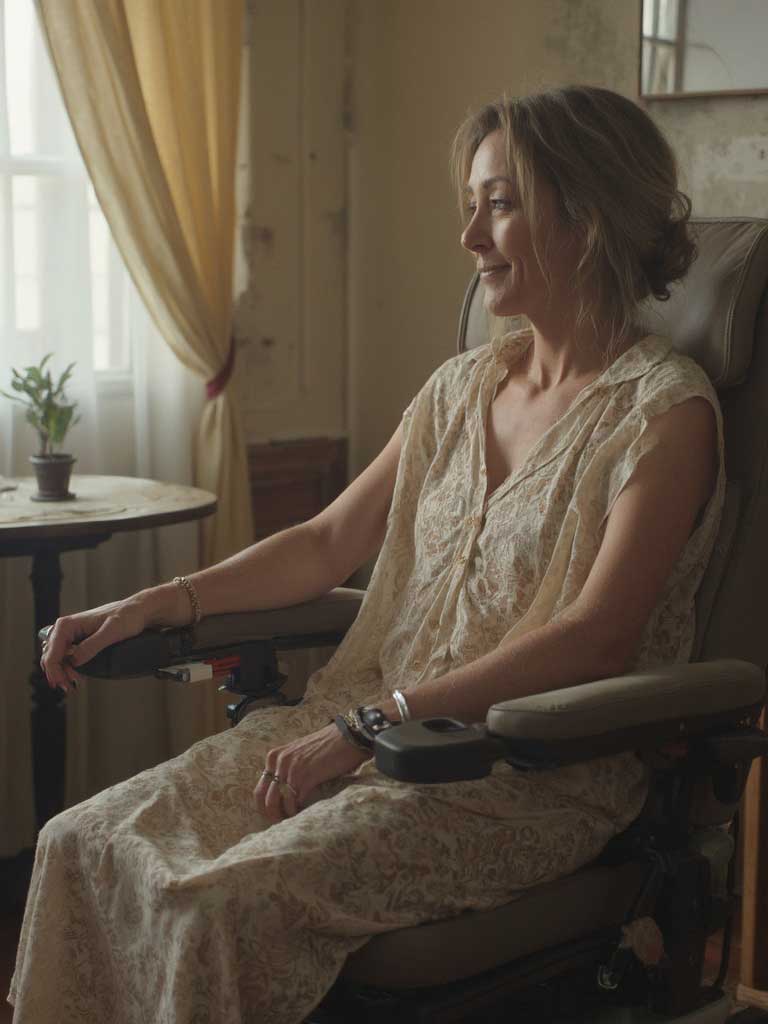
There are different types of transfer chairs. When purchasing for the elderly or patients, it is necessary to consider the type of transfer chair, such as manual transfer chairs, electric transfer chairs, hydraulic transfer chairs and multi-functional transfer chairs, etc.
At the same time, their medical characteristics and age features should also be taken into account to make a comprehensive judgment for postoperative patients and care scenarios. If necessary, the doctor’s advice should be followed.
If you need help with how to choose a transfer chair, you can contact us. Ageally hopes to be your best partner.

